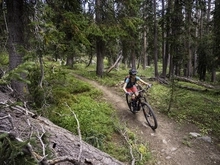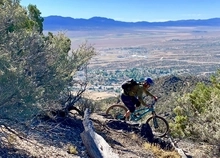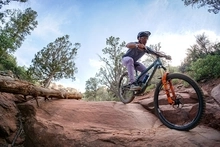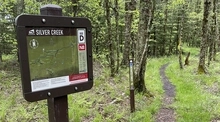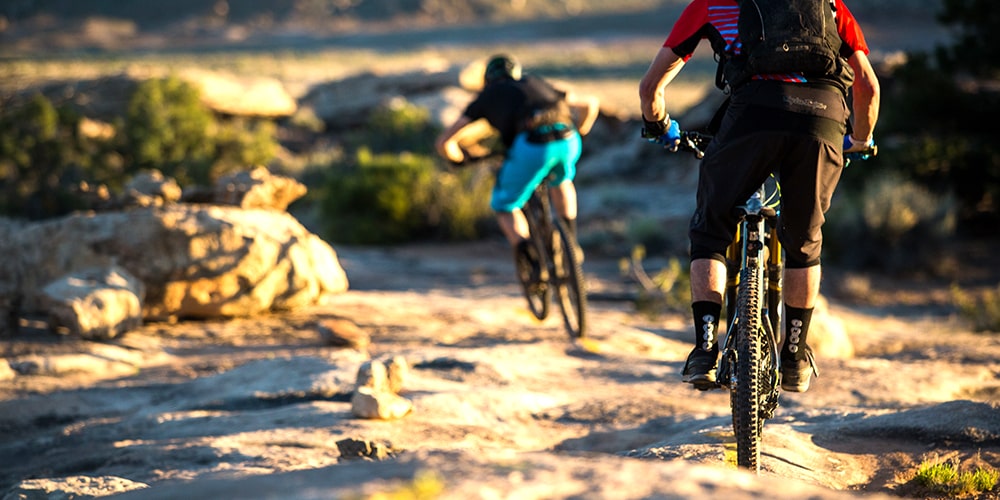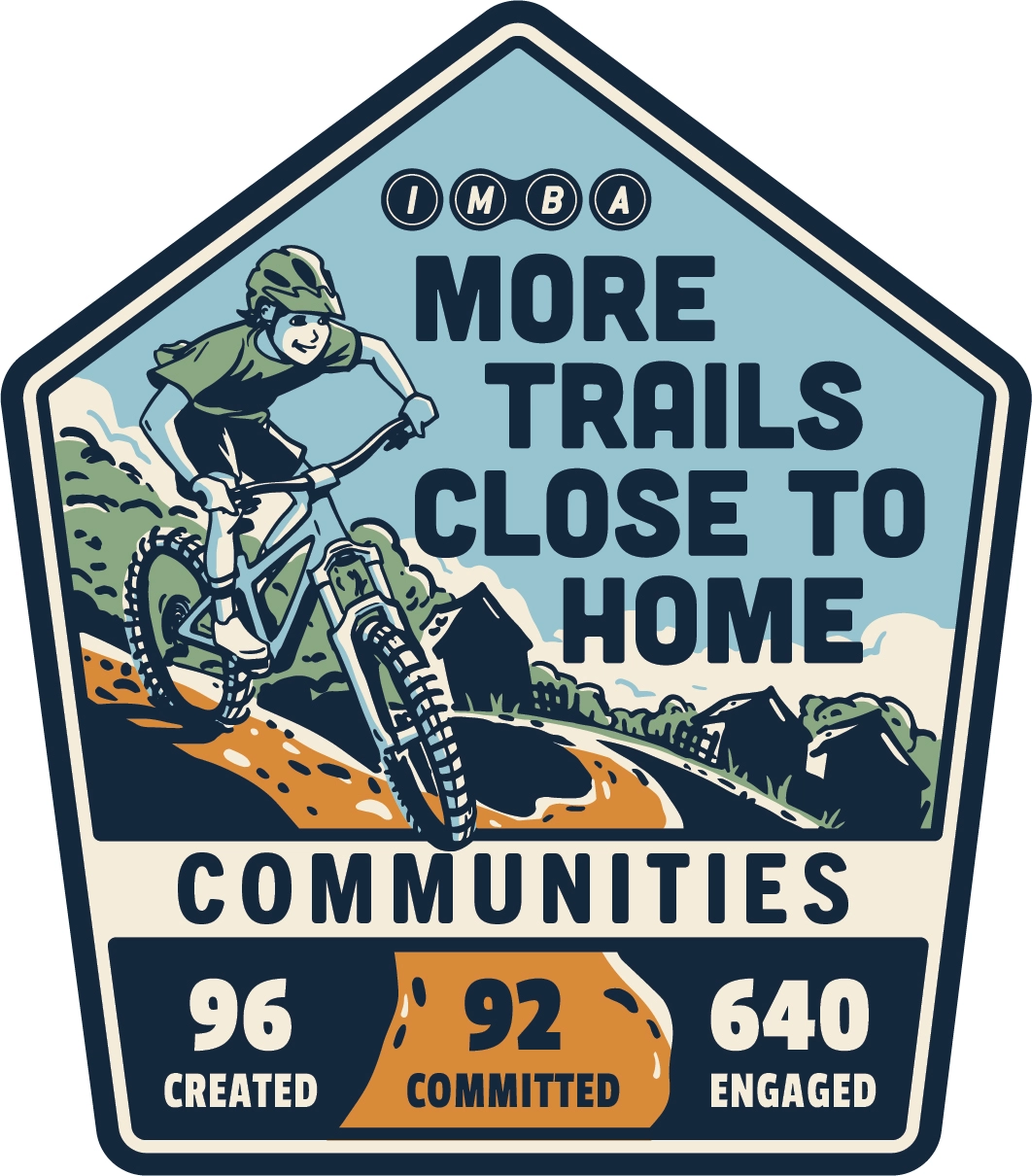Activating Appalachia with All-Levels of Recreation
What is the definition of a trail champion? These select few are leaders in their community who have bestowed their knowledge, influence, and passion into advocating for the best local trails on the ground.
We are celebrating these trail champions through a Q&A style blog series. These local leaders have been nominated by members of their communities and have agreed to share insights into their success.
Meet trail champion, Gary Moore, Executive Director of the Colorado Mountain Bike Association in Central Colorado.

IMBA: Tell us about yourself - why do you love mountain biking?
Gary: I’ve always had the love of riding a bike, since I first set off on two wheels. For me it has always provided a certain kind of freedom, I can just jump on my bike and the grand adventures begin. I started riding off-road in the early 70s on modified 10-speeds crashing through SoCal canyons on moto trails and built my first berm off the end of the cul-de-sac near my house. It was a blast but the bikes weren’t very durable. When life brought me back to the now “sport” of mountain biking many years later I was blown away by how far things had come. The bikes are amazing and the variety of trail experiences is incredible. It’s a culture now and one that I love enjoying in Colorado. Nothing soothes my soul like getting back out in nature and riding my bike – particularly on trails that I helped shape.
IMBA: What partnerships have been the most successful for you in creating more trails in your area?
Gary: There are so many important partnerships in this work; it’s all relationships. Land managers, donors, business partners, fellow advocates, the MTB community itself, the full 360. Ultimately, I think it is the land manager partnerships that move the needle the most. They’re the gatekeepers for everything and it doesn’t matter how many members we have or how much money we raise if we can’t get a project approved. Starting with learning their challenges and goals, and finding win-win projects is key. You have to partner with them and with the other interest groups to find the opportunities for new trail projects. We started a regional partnership called Outside 285 that set out to identify important and critical habitat and then look to see where we could add outdoor rec amenities while minimizing impacts to these important areas. It’s been a huge success in finding consensus among all interest groups leading to a broad range of wildlife and trails focused projects.

IMBA: What resources have you found most helpful in guiding the trail vision you have for your community?
Gary: Listen to your community. Depending on the size of your community, this can be straightforward or it can be quite difficult. When I was a volunteer for SORBA Woodstock, we had a close-knit community and we could simply get a stack of pizzas and a cooler of drinks and invite folks to come talk to us. Now in Denver with a broad community that is also geographically dispersed, it takes more effort to gather those opinions – we utilize surveys and social media quite a bit. Whenever I am out on the trails I try to talk to as many people as I can about the experience they’re having and what they would like to see in our area. My riding partners aren’t always a fan of this approach, “more riding, less talking.” But we like to examine our trails by the inventory of experiences they offer. Are there enough beginner trails? Are there challenging options for the very experienced? Are there progressions in-between? Our opportunities to build these experiences come as they come, but having the vision, knowing what you need put on the ground, guides our plans and conversations.
IMBA: What advice would you give to communities that want to see more trails near them?
Gary: First thing is to build your coalition and identify your primary advocate. Depending on your situation, this can be a volunteer, but I’ve seen the impact of a dedicated advocacy voice and it simplifies the process of building the necessary relationships. Advocacy is the long game, don’t get in a hurry. Next, you’ll want to find the land upon which you can build, then determine who owns/manages that land. Spend the time to get to know them – what are their challenges and what are their goals? Does that align with adding natural surface trails? Who makes the decision to approve a project and what is the process for that? Who are the other stakeholders for this land and can you forge a relationship with them? You’ll need to build your coalition to make this as easy for the land manager as possible to get on-board.

IMBA: People forget that trails don’t just fall from the sky. What support do you wish you had when you were starting this work?
Gary: I wish I knew more trail champions! Honestly, I’ve been fortunate to have people available to me as I’ve grown into this position. From the experienced volunteers that showed me what they knew on my first trail work parties, to my colleagues here in CO that were doing the same work and were willing to set aside some time every month to talk through anything and everything. It’s easy to feel isolated and like you’re solving the world’s problems for the first time ever, but it’s rarely the case. I hope folks that are earlier in their learning curves take advantage of resources like this series on trail champions. I recommend reaching out to others doing this work, even if they have a different focus. There’s so much to learn and understand and so many of us out there doing it every day. And I’ll just add, they are really great people. I’ve been so impressed with the quality of human being that shares their time, whether paid or volunteer, to create these experiences for others.

IMBA: There is often trepidation around trails. How have you energized your community around a vision for more trails?
Gary: Colorado is a complex and complicated landscape for adding new trails. We’re fortunate to have some of the most amazing public lands and awesome wildlife so protecting that always comes first. It’s what makes Colorado so special. Getting approvals for new recreational amenities like trails – and the needed infrastructure that includes parking, waste management, etc. – involves talking with many different interest groups and really listening. I enjoy collaborating with my counterparts in conservation and learning more about how we can create world-class trails without causing undue harm to habitats. By showing that we value everyone’s priorities, and working closely with them on the needed solutions, we are finding plenty of opportunities to pursue our vision.
IMBA: We know that Trail Champions don’t work alone. Who’s on your team for more trails?
Gary: Well, the broad answer to this is everyone I’ve talked about here. All of our partners, members, volunteers, and donors make our successes possible. But I do have a couple of people to call out if I may. COMBA is fortunate to have one of the most energetic and passionate trail champions I can imagine in our trails program director, Gil McCormick. Gil has been here fighting the good fight since the first MTBs rolled through the hills. Most of that time was as a volunteer, doing everything from the advocacy work to moving dirt and rocks. I’m pleased that we’ve been able to make this a full-time position for Gil in the last couple of years, he deserves it and the community benefits daily. Also integral to our mission, Britt Greer has grown an incredible women’s program for COMBA which does such important work to getting more women out on the trails and enjoying great experiences on mountain bikes. Leading entirely as a volunteer, she has expanded the program’s offerings to include shop nights, dig days, skills clinics and social rides. Britt has also overseen the addition of BIPOC focused events and some events that are led entirely in Spanish. Welcoming these groups into the community is vital to strengthening our coalitions and ensuring that we represent all mountain bikers.
Accepting a check from the mayor of Black Hawk in recognition of our work on Maryland Mountain, Black Hawk CO // Rocco Maiolo




